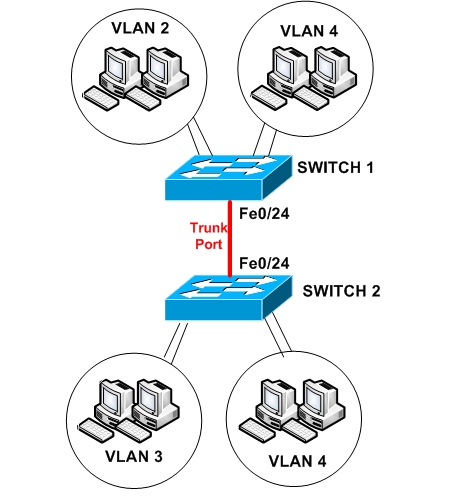VLAN
Broadcast domain created by switches all ports in a single VLAN are in a single broadcast domain
Are VLANS Required?
It is important to point out that you don't have to configure a
VLAN until your network get so large and has so much traffic that you need one
When do I need a VLAN?
- If you have more than 200 devices on your LAN
- If you have a lot of broadcast traffic on your LAN
- If a group of users needs more security or being slow down by too many broadcast traffic on your LAN
- If a group of users needs more security or being slow down by too much broadcast
Why not just subnet my network?
Each VLAN should be in its own subnet. The benefit that VLAN provides over a subnetted network is that devices in different physical locations are not going back to the same router, can be on the same network.
The limitation of subnetting a network with router is that all devices on that subnet must be connected to the same switch and that switch must be connected to a part on the router.
How can devices on different VLAN communicate?
It is with a router or a layer 3 switch or each VLAN is its own subnet must be use to route between the subnets
What is a trunk port?
When there is a link between two switches or a router and a switch that carries the traffic of more than one VLAN that port is a trunk port. A trunk port must run special trunking protocol that is IEEE Standard 802.1Q.
What do VLAN offer?
It offers higher performance for medium and large LAN because they limit broadcast as the amount of traffic and the number of devices growth, so that the number of broadcast packets.
VLANS also provides security because you are essentially putting one group of devices in one VLAN, on their own network.
| VLAN #s | Range | Usage |
| 1 | Normal | Default |
| 2-2005 | Normal | Create, modify, delete |
| 1006-4094 | Extended | Create, name, state is always active |
| 3968-4047 and 4094 | Enternally Allocated | 80 VLANS |
Creating VLANs
switch# conf t
switch#(config)#vlan {vlanid|vlan_range}
ex:
switch# conf t
switch(config)#vlan 15-20
To delete VLANs
switch# config terminal
switch(config)#vlan
switch(config-vlan)# no vlan {vlanid|vlan range}
Naming a VLAN
switch#conf t
switch(config)#vlan {vlanid}
switch(config-vlan)#name vlan-name
switch(config-vlan)#no shut
Assigning port to VLAN
switch#conf t
switch(config)#int {type slot|port}
switch(config-if)# switchport access vlan {vlanid}
ex:
vlan 15
name accounting
switch(config)#switchport access accounting

No comments:
Post a Comment